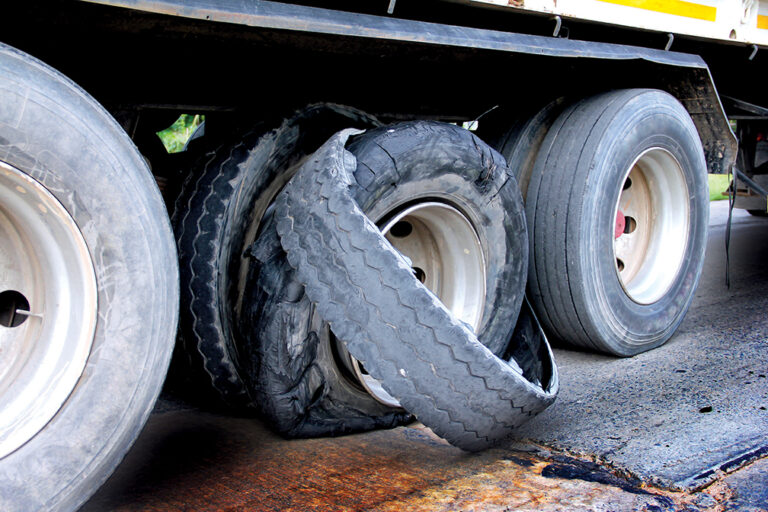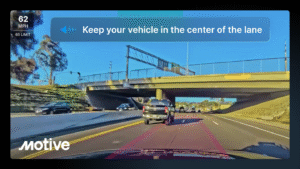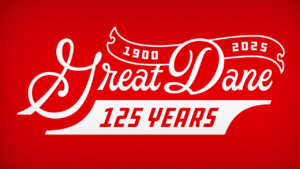Modern trucks are equipped with features that truckers several decades ago couldn’t even dream about. They are incredibly complex machines. Yet, there is one feature of every truck that is pretty simple. It’s also one of the most neglected.
That vital component is the tires.
If there’s an example in trucking of a product that has gotten so good that it’s taken for granted, it’s tires. The days of dangerous split rims, tubes and frequent maintenance are long gone. Today, tires are almost an install-and-forget item, providing 100,000 miles or more of flawless service without a problem.
Tires aren’t, however, infallible. Tires can suffer damage from improper inflation, road hazards, overload and other conditions — and they can fail spectacularly, often at the most inopportune moments. A steer tire blowout can cause immediate loss of control and result in a catastrophic accident. That’s a worst-case scenario, but a failed tire can easily cost a truck owner both hours and dollars in an industry when both are at a premium.
Good drivers know that a small amount of care can help keep tires faithfully performing their job longer.
It starts with selecting the right tires for the job.
Discounted, off-brand tires may save money at purchase time, but they could end up costing much more because of problems down the road. Drivers are often dismayed to notice uneven wear or even tread damage to tires that aren’t very old. In many cases, uneven wear can be caused by improper inflation or by wheels that are out of alignment.
Cheap tires, however, are sometimes made with inferior rubber and other materials, or they can be improperly molded — including out-of-round or other imbalance conditions — right from the assembly line.
One way to save money on new tires is to ask about “blems.” These are blemished tires that might have some cosmetic damage but are otherwise just as sound as unblemished versions. Blems can often be mounted so that the blemish can’t be seen without crawling under the truck, and they provide the benefits of quality tires at a reduced cost.
Retreaded tires are another option, and some drivers have great success with them. Unfortunately, while some retread companies are reputable and reject damaged carcasses, there are a few that will retread just about anything. Inspect retreaded tires carefully, including a look inside for patches or hidden damage.
Occasionally, it may be necessary to purchase a used tire to replace one that is too damaged to repair. If the used tire is to be paired with a tire already on the vehicle, the tread depth and diameter of the two tires should match. If they don’t, one tire may take on more weight than the other.
When purchasing a new truck, wide-base tires may be an option for the drive axles. These tires have evolved from the “super-single” versions that were tested back in the ’90s. They’ve come a long way, providing more traction and longer life expectancy than their predecessors. Wide-base tires save weight — and therefore, fuel — and because of this, they are popular choices. A potential downside is that when one goes flat, there isn’t another tire next to it to absorb the load. A flat tire will put your truck on the side of the road until help arrives.
It’s the driver’s responsibility to make sure the truck’s tires are inspected regularly, and that includes air pressure in the tire. A whack with a “tire thumper,” a hammer or even a flat hand can indicate that a tire is flat or dangerously low on air, but only an air-pressure gauge can detect smaller discrepancies.
In some cases, an inflation pressure that is only a few PSI (pound per square inch) off can cause damage. In the case of steer tires, differing air pressures can cause the truck to pull to one side or the other. In cases where tandem tires are used, low air pressure in one tire can cause the tire beside it to absorb more of the weight that should be split evenly between them, increasing heat buildup and possibly overloading the tire. In any case, too little or too much air pressure can cause uneven tread wear, reducing the tire’s useful life.
Every driver should carry a tire gauge. In addition, a handy device to have on hand is an air hose that will connect to the tractor’s emergency brake like. By pushing in the tractor protection valve, leaving the red trailer valve engaged, the air line is charged with enough pressure to air up a truck tire. Without an air hose, the driver must hope the truck makes it to the nearest truck stop and that there is an accessible air hose to use.
Tires should be thoroughly inspected, including both the sides and the tread, during every pre or post-trip inspection. Foreign objects lodged in the tread can work their way through steel belts and into the tire’s air chamber, causing problems later. Often, objects such as screws and nails can be pulled out of the tread before they break through. Even when objects penetrate deeply enough to cause an air leak, the sooner they are removed the better. The longer they remain, the more damage they can do, potentially creating holes that are too large to repair.
Holes, cuts and tears in tire sidewalls can’t be repaired, so it’s very important to inspect them regularly. Even on the brightest day, a flashlight may be necessary to get a good look between tandem tires or to view the inward side of tires. If damage is found, the tire must be replaced. Bulges or bubbles in the sidewall indicate a problem with an inner layer of the tire, allowing air to push out the sidewall. These should be looked at quickly. These bulges will only get worse if left alone — and they will eventually result in a blowout.
Additional, quick inspections should be done whenever the truck is stopped. Checking each tire’s air pressure more than once a day is not necessary unless a problem is detected. A walk around and visual inspection, however, can help identify recent damage and prevent a bigger problem later. Some drivers make a habit of walking down one side of their truck on the way to the truck stop’s restaurant or restroom and then checking the other side on the walk back.
Tires are one of the most abused items on a truck. Take care of yours — and they’ll take care of you.
Cliff Abbott is an experienced commercial vehicle driver and owner-operator who still holds a CDL in his home state of Alabama. In nearly 40 years in trucking, he’s been an instructor and trainer and has managed safety and recruiting operations for several carriers. Having never lost his love of the road, Cliff has written a book and hundreds of songs and has been writing for The Trucker for more than a decade.














